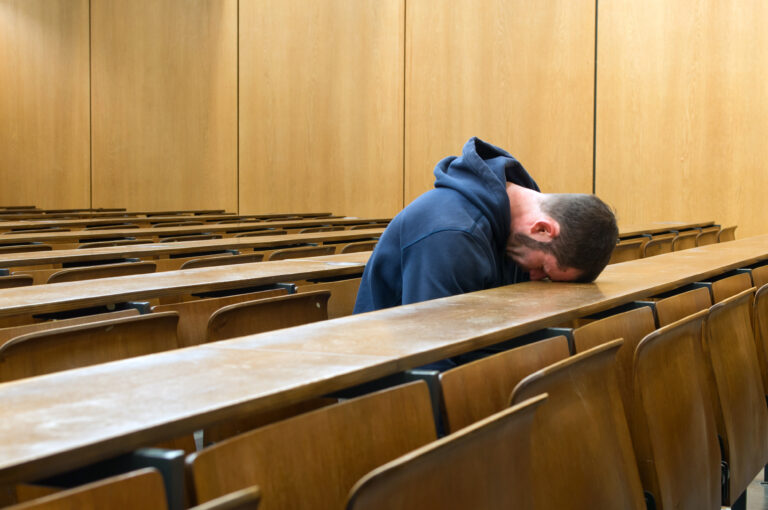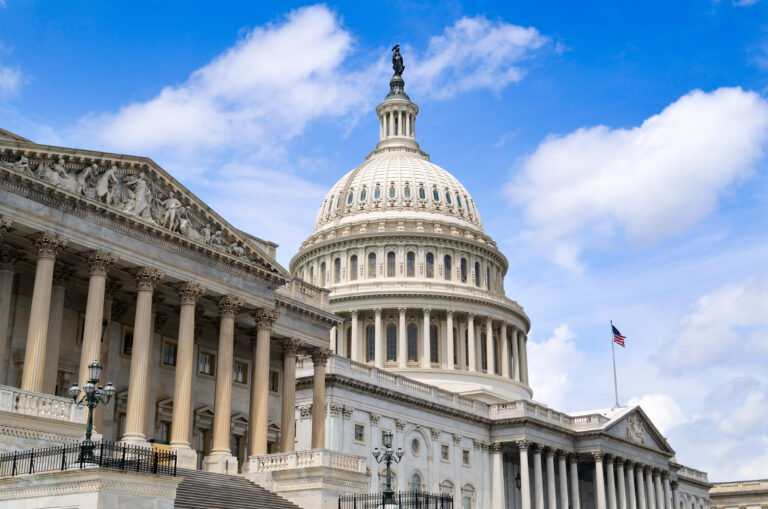According to a first-of-its-kind federal survey, hunger and homelessness may be far more widespread on college campuses than researchers or policymakers have historically imagined. Recently released federal data suggests that as many as 4 million college students may be experiencing food insecurity, with 1.5 million experiencing homelessness.
Published in July as part of the National Center for Education Statistics’ latest National Postsecondary Student Aid Study (NPSAS), the findings are a much-needed acknowledgment of a deeply embedded but historically overlooked aspect of postsecondary access and success. Research has found that students who experience food insecurity while in college are more than 40 percent less likely to graduate.
Conducted in the spring of 2020, just as COVID-19 was beginning to fuel hardship for students and their families, the new study joins other attempts (from Course Hero to Temple University’s Hope Center for College, Community, and Justice) to quantify the scope of basic needs insecurity during the pandemic. Sadly, even accounting for the unprecedented uncertainty of the time, experts believe the study still paints a fairly accurate picture of how rampant basic needs insecurity is on college campuses. It’s a picture that will only become clearer in the years as NPSAS continues to collect data beyond the pandemic.
“While the pandemic has receded since these data were collected, inflation and economic trends continue to strain students and families, and it is not likely these numbers have significantly improved,” says Bridget Burns, CEO of the University Innovation Alliance. “These findings are just the start. We can only make progress on what we measure, so this data represents a critical step toward addressing the basic needs of students. It is impossible for students to learn and graduate if their basic needs are not met.”
According to an analysis of the NPSAS data by the Hope Center, 23 percent of undergraduate and and 12 percent of graduate students reported experiencing food insecurity in the previous 30 days. About 8 percent of undergraduate students and 5 percent of graduate students reported experiencing homelessness.
Inequities exist between racial and ethnic groups, as well as institutional types:
- More than one-third of Black undergraduate students report experiencing food insecurity, compared to 18 percent of white students.
- Nearly 40 percent of undergraduate students at Historically Black Colleges and Universities report food insecurity, compared to 20 percent of undergraduates at predominantly white institutions.
- Basic needs insecurity was higher at community colleges than at public and private non-profit four-year institutions, with nearly one-quarter of community college students experiencing food insecurity.
“It’s unfortunate but unsurprising that community college students struggle with basic needs insecurity more than others,” says Aneesh Sohoni, CEO of One Million Degrees, which provides wraparound services to community college students in Chicago. “Two-year institutions are the gateway into higher education for millions of students, and many of these learners are from low-income families. They are raising children of their own and working while in school. Currently, too few community college students have access to the kind of holistic support they need to succeed.”
Concerns that basic needs insecurity have not tailed off are likely well-founded. Even before the pandemic, trailblazing research conducted by the Hope Center found alarmingly high rates of hunger and homelessness—45 percent and 17 percent, respectively—among college students.
“Even if the numbers are skewed by the voluntary nature of those earlier surveys, the actual numbers are likely still staggering,” according to Whiteboard Advisors SVP, Noah Sudow, who previously served as Assistant Vice Chancellor for Research and Innovation at the Ohio Board of Regents. “This is not a new problem in higher education, but we are certainly developing a better understanding of it.”
Recognizing the need for nationally representative estimates, the Hope Center’s founder and former president, Sara Goldrick-Rab, first urged the NCES to collect data about food and housing insecurity in 2015. Five years later, NCES incorporated several questions around basic needs into the NPSAS, which has measured how students pay for their education for more than three decades. With responses from more than 100,000 undergraduate and graduate students at 2,200 institutions across all 50 states, the results are representative of about 20 million learners, according to the NCES.
The good news is that a growing number of colleges and universities are working to better meet students’ basic needs in recent years. More than 700 food pantries can now be found on college campuses; a decade ago, there were fewer than 100. Institutions are working to address homelessness by partnering with local housing authorities and community-based organizations to secure housing for students. Member institutions of UIA have forgiven the small amounts of debt that too often create a barrier for students frustratingly close to completing a degree. Some have also offered completion grants, providing students with the extra financial support they need to pay for basic needs and other expenses that help them cross the finish line.
Several colleges have even hired directors of basic needs, giving students dedicated campus leaders to turn to when they are struggling not only with food or housing insecurity but also with challenges related to childcare, transportation, and financial wellness.
“The new findings align with increasing concerns about, and efforts to address, broader student needs beyond the classroom,” says Burns. “We should be particularly concerned about the higher risk of food insecurity among students of color and at minority-serving institutions. America’s economic success and the prosperity of millions of students and families depend on our ability to ensure higher education is accessible to all students. Some institutions are working hard to address this issue, but many are not. This data creates a call to action for those who might be lagging behind.”




